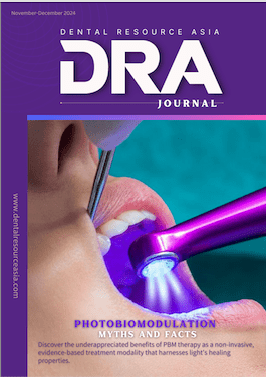SINGAPORE: The National University of Singapore (NUS) has introduced a cutting-edge augmented reality (AR) radiography simulator, marking a significant leap forward in dental education. This innovative tool, known as iRadiate3D, is set to transform the way dentistry students learn and practice intraoral radiography techniques.
Addressing a Common Challenge
Dr Lim Li Zhen, a Senior Lecturer at NUS Dentistry, spearheaded this project in response to a recurring issue faced by students learning intraoral radiography. The precise positioning of X-ray holders inside a patient’s mouth has long been a challenge for aspiring dentists. Dr Lim noted, “Students tend to get overwhelmed when a task has too many steps or components.” To tackle this, she devised a strategy to “break it down into smaller, simpler tasks.”
From 2D to 3D: The Evolution of iRadiate
The journey began with iRadiate2D, an interactive web-based tool introduced in 2019. This initial version helped students grasp the basics of setting up and positioning X-ray holders. Building on its success, Dr Lim and her team developed iRadiate3D in 2020, offering a more immersive learning experience.
iRadiate3D utilizes a 3D-printed model of a jaw, complete with tongue and cheek, alongside a smartphone employing its camera and AR capabilities to display corresponding X-ray images. This setup allows students to practice their skills without the need for an actual X-ray room, specialized equipment, or constant staff supervision, thus providing a safe and accessible learning environment.
Overcoming Implementation Challenges
The introduction of iRadiate3D was not without its hurdles. Initially, the system’s dynamic mode, which provided real-time X-ray images, led to over-reliance among students. Dr Lim adapted the approach, using the dynamic mode for demonstrations while employing a static mode for student practice, more closely mimicking real-world conditions.
The implementation of iRadiate2D and iRadiate3D has significantly enhanced the learning experience for dental students at NUS. Students now arrive at practical sessions better prepared, making these sessions more efficient and productive. The tools have made the complex procedure of intraoral radiography less daunting for learners.
Recognition and Global Adoption
The innovative approach has not gone unnoticed. Dr Lim and her team received the NUS Annual Digital Education Award in 2022 and the Faculty of Dentistry’s Excellence in Teaching Award for the academic year 2020/21. Moreover, the iRadiate2D website has already been adopted by dental schools overseas, including institutions in the United States, highlighting the global appeal of this educational innovation.
<< Back to Contents Menu
EDITOR’S PAGE | ADVISORY BOARD | NEWS | PRODUCTS | COVER FEATURE | CLINICAL | PROFILE | EXHIBITIONS & CONFERENCES | PRACTICE MANAGEMENT
Future Prospects
Dr Lim’s vision extends beyond teaching X-ray techniques. She is now exploring ways to help students interpret X-ray images and make accurate diagnoses, further enhancing the comprehensive nature of dental education at NUS.
The integration of AR technology in dental education at NUS represents a significant step forward in preparing future dentists for the complexities of clinical practice. As technology continues to evolve, the potential for further advancements in dental education remains vast, promising an exciting future for both educators and students in the field of dentistry.
The information and viewpoints presented in the above news piece or article do not necessarily reflect the official stance or policy of Dental Resource Asia or the DRA Journal. While we strive to ensure the accuracy of our content, Dental Resource Asia (DRA) or DRA Journal cannot guarantee the constant correctness, comprehensiveness, or timeliness of all the information contained within this website or journal.
Please be aware that all product details, product specifications, and data on this website or journal may be modified without prior notice in order to enhance reliability, functionality, design, or for other reasons.
The content contributed by our bloggers or authors represents their personal opinions and is not intended to defame or discredit any religion, ethnic group, club, organisation, company, individual, or any entity or individual.

